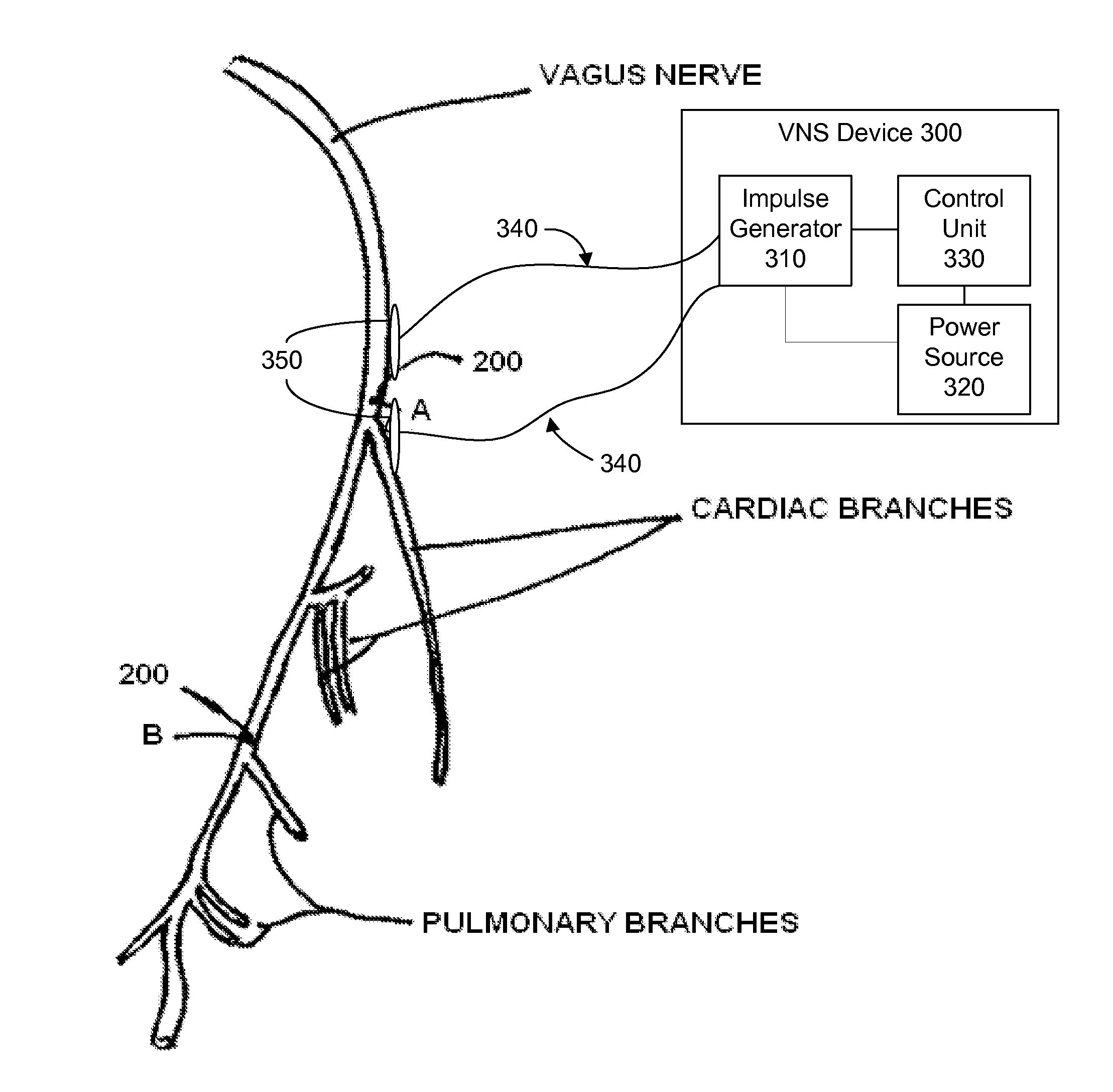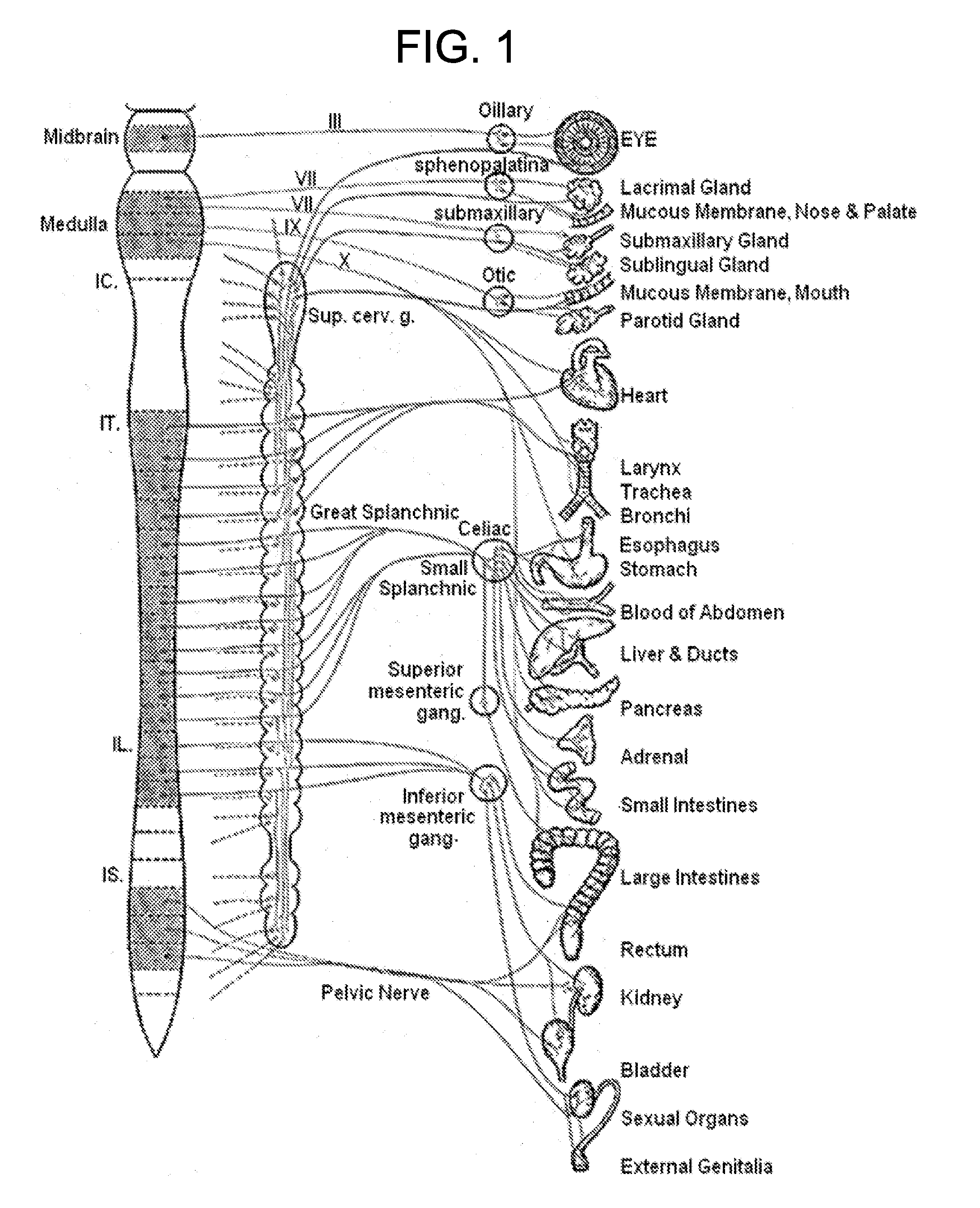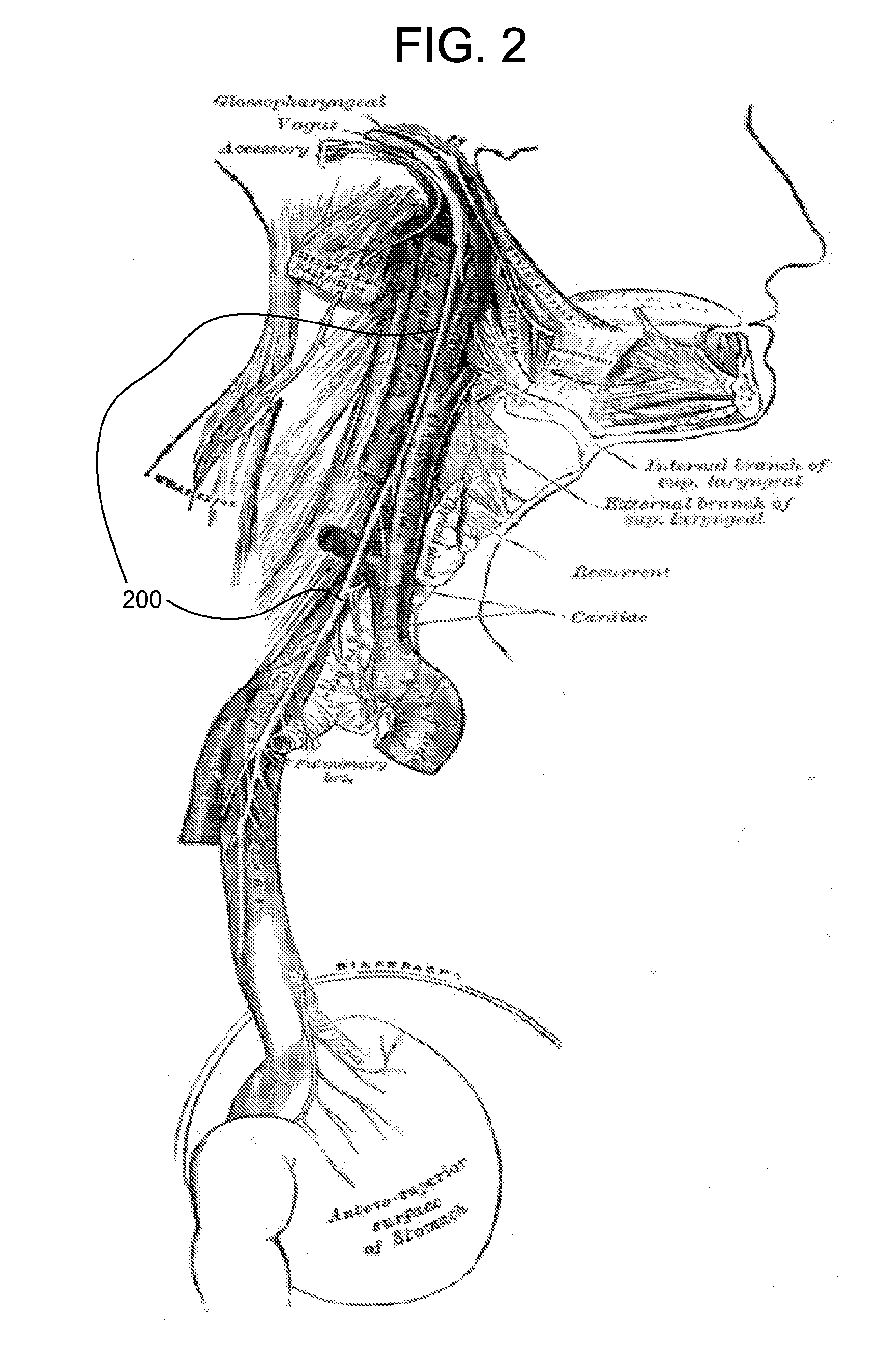Electrical stimulation treatment of hypotension
a technology of electrical stimulation and hypotension, applied in the field of electrical stimulation treatment of hypotension, can solve the problems of inability to achieve the effect of reducing the risk of strok
- Summary
- Abstract
- Description
- Claims
- Application Information
AI Technical Summary
Benefits of technology
Problems solved by technology
Method used
Image
Examples
Embodiment Construction
[0051]It shall be understood that the embodiments disclosed herein are representative of preferred aspects of the invention and are so provided as examples of the invention. The scope of the invention, however, shall not be limited to the disclosures provided herein, nor by the provisional claims appended hereto.
[0052]It has been observed in the literature that the nervous system maintains a balance of the signals carried by the sympathetic and parasympathetic nerves. The vagus nerve, as a source of a signal to constrict cardiac muscle, is thought to provide a baseline level of tonicity in the cardiac muscles, in order to prevent the tissue from expanding too much, and thus is considered responsible for depressing blood pressure to prevent heart exhaustion and dangerous hypertension during extreme exertion.
[0053]Specifically, one or more embodiments of the present invention contemplate that the signals carried by the vagus (parasympathetic) nerve to cause a slowing of the heart, pos...
PUM
 Login to View More
Login to View More Abstract
Description
Claims
Application Information
 Login to View More
Login to View More - R&D
- Intellectual Property
- Life Sciences
- Materials
- Tech Scout
- Unparalleled Data Quality
- Higher Quality Content
- 60% Fewer Hallucinations
Browse by: Latest US Patents, China's latest patents, Technical Efficacy Thesaurus, Application Domain, Technology Topic, Popular Technical Reports.
© 2025 PatSnap. All rights reserved.Legal|Privacy policy|Modern Slavery Act Transparency Statement|Sitemap|About US| Contact US: help@patsnap.com



